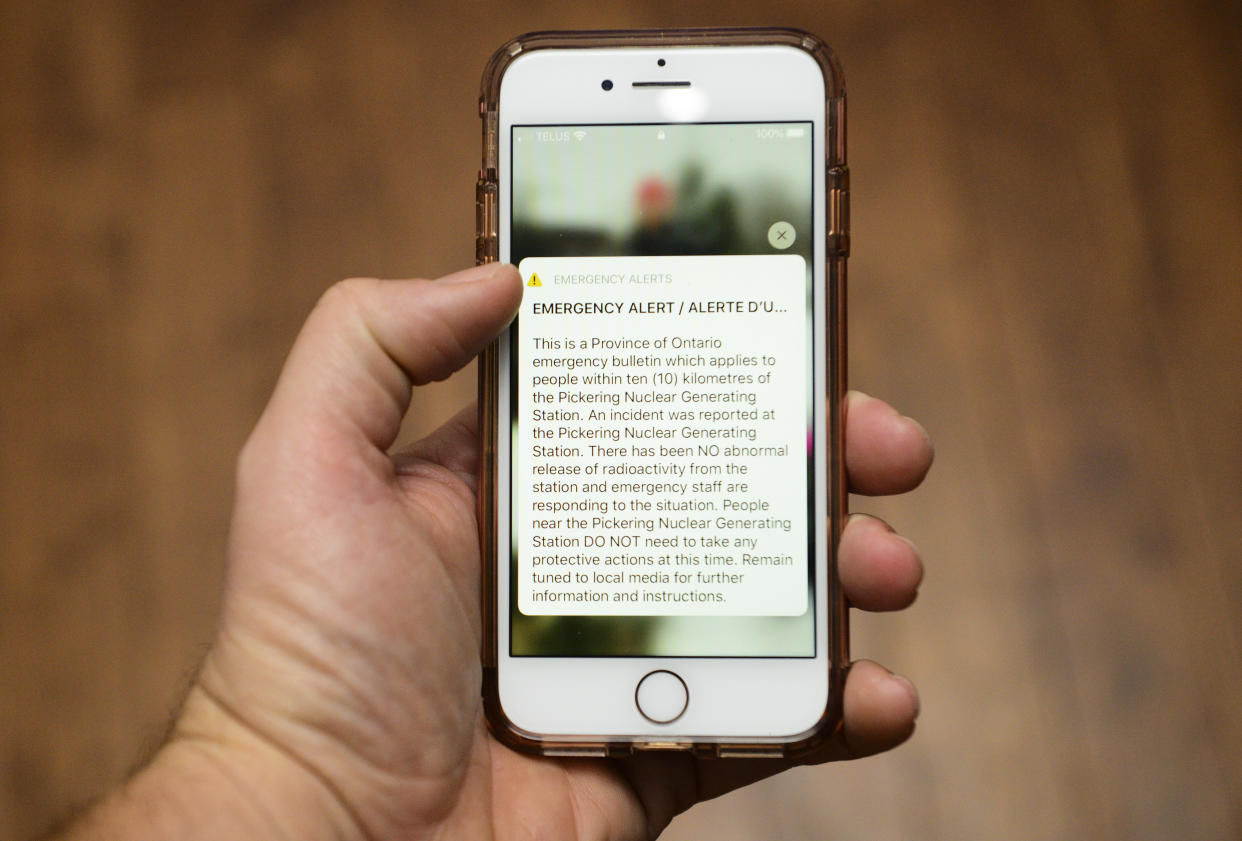Emergency alert system offers no opt out in Canada

An emergency alert about a nuclear “incident,” which was sent in error in Ontario this past weekend, has prompted many questioning how the system works.
AlertReady, the system which sent out the emergency warning to mobile devices and media outlets, is a program designed to inform people of imminent dangers. If you have a compatible mobile device, you will receive the alert with no option to opt out of the program.
Martin Belanger is the director of public alerting at Pelmorex, which provides the software to government officials to issue the alerts. He explains to Yahoo Canada News that in Canada, there are two different levels when it comes to public safety alerts.
The first type of alert is an emergency alert, which is sent out for situations that pose an imminent threat to life. The alert is sent to TV and radio stations, as well as compatible wireless devices.
The second type is an information advisory. Unlike an emergency alert, these types of alerts aren’t sent out to the media and compatible cell phones. Instead, the local government, who are the authorized issuer of the alert, sends them out to an area targeted with a specific issue. This can include a road closure, a boil water advisory, a dangerous animal on the loose or a wildfire in an isolated region.
“The difference (between the two alerts is), if suddenly that situation poses are greater risk to life or property, this is when the severity is upgraded so it reaches the criteria to send an emergency alert,” Belanger says.
Unlike emergency alerts, non-emergency alerts won’t interrupt broadcasts on TV or radio, or trigger cell phones with the loud alert tone.
“When non-critical situations are sent out, they will be picked up by outlets who feel it’s important to make them available, like the Weather Network, or local news,” he says. “But it’s not sent to all TV or radio stations and cell phones in the area.”
In the U.S., there are different tiers of alerts for different emergencies. For example, a specific alert will go out to a certain region for an Amber Alert, while a so-called presidential emergency alert is sent out to the entire country. Depending on the level of alert, a cell phone user may be able to opt out of it. In Canada, there is no such option.
“In Canada, you cannot opt out according to the CRTC, from receiving emergency alerts,” says Belanger.


